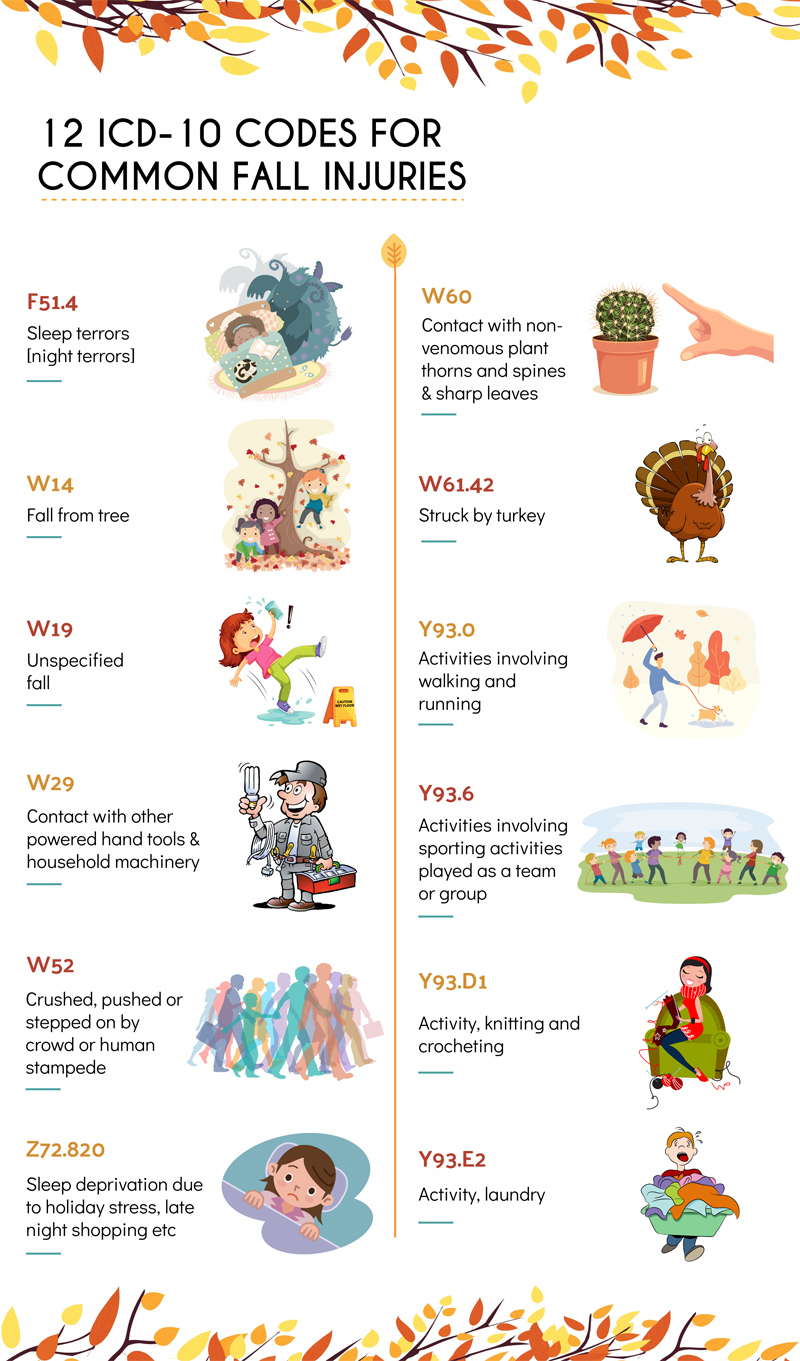Slip and fall injuries are quite common in the autumn season. Fall injuries are mainly due to fall leaves covering the ground, which makes it difficult to see the surface you’re walking on and thus increase the risk of personal injury. Floors and sidewalks that are wet and slippery due to rain, and pedestrian accidents caused by falling objects such as tree branches also lead to injuries. All such injuries can be reported using specific ICD-10 codes. Experienced medical billing and coding companies will be up to date with such codes and any coding changes.

Most fall injuries may require new ICD-10 codes. Make sure to assign codes that match the physician’s exact documentation. Medical coding outsourcing is an ideal option for busy practices to meet their coding and claim submission tasks.




